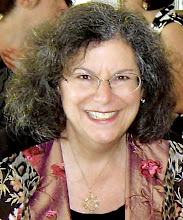 [Photo credit: Janet Lippincott]
[Photo credit: Janet Lippincott]
I attended the press conference called by the rugged specimen of bufo americanus this past week.
At four years old, he still expects another 5-6 years in his lifespan. Yet he’d barely survived the first leg of a tortuous journey to the old Roxborough Reservoir and was concerned for both his return trip and the journey ahead that faced his offspring.
Toad began the press conference by thanking the Toad Detour committee – particularly the 5th District of the Philadelphia Police Department and the Philadelphia Streets Department, Toad Detour founder Lisa Levinson, and Parks & Recreation environmental education director Debbie Carr, among others – for recognizing that spring migration in the amphibian world is less flexible, by nature, than automobile traffic.
He offered some grim statistics, while the monitor panned over one hundred dead fellow creatures, squashed on Port Royal Avenue, around Hagys Mill Road and Eva Street. That was the body count on just one evening, March 6, when Toad Detour volunteer Judy Stepenaskie thought to go out for reconnaissance.
Thousands of Toad’s colleagues and relatives have been thoughtlessly mowed down annually, the potential mass slaughter fortunately reduced by the efforts of Lisa Levinson and the Toad Detour team she has assembled over the past three years, he said.
The monitor zoomed in on Levinson as Toad relayed her story.
Levinson was leaving work in the evening hours of April in 2007, and thought it peculiar to see so many leaves blowing across the street. “It isn’t fall,” she thought to herself.
When she realized she was observing a mass movement of toads, she said something to a law enforcement person who happened to be nearby.
On a second occasion, when Levinson saw cars racing over the neighborhood streets from Ridge Avenue crushing the animals, she rolled up her sleeves. She gestured to slow down oncoming cars while trying to help some of the toads make it across the street. Somebody called the police about a crazy lady in the middle of the road.
Meanwhile, enter Carr, from the former Fairmount Park system and Doug Wechsler, a researcher and photographer with the Academy of Natural Sciences. The Schuylkill Center, where many of the toads reside, Mobilization for Animals, Public Eye, Applied Ecological Services, several civic associations and concerned residents from Montgomery County and as far away as Phoenixville, also became involved.
On the third occasion, Levinson called the police herself. When the officer came, Levinson was administering to a dying toad in her hand. That officer grasped the larger issue.
When the ground thaws and winter snows give way to spring rains, toads awaken and climb out from their hibernation zones, a foot deep into the soil. Spring migration to the spawning pond commences.
“Mating migration is not restricted to the Roxborough area,” noted Toad.
“The dates aren’t set in advance,” explained Toad, deviating from his prepared remarks. “It varies from year to year, depending on the weather conditions. This year, we’re considerably earlier than recent years.”
As Toad continued, it became clear that he and his cohorts do not operate as toadily free agents, but in accordance with natural bio-rhythms they have little ability to control, much less fully understand. They respond to their essential role in the ecosystem, in which their diet keeps the insect population under control and their occasional life sacrifices naturally serve the population of owls and other wildlife.
“We’re allies for your gardens and farms,” declared Toad, as the press conference crrroaked on. “We’re vital pieces in the energy cycle of life.”
Since 2009, officially-sanctioned road blocks and vests are provided annually to Toad Detour volunteers at this time of year so they can detour traffic from the most heavily traversed migration paths.
Volunteers set up the Toad Detour from about 7:00 – 9:00 p.m. in the evenings.
“We’re nocturnal,” explained Toad. “And rainy nights are especially compelling for our challenging migration.”
Straying from his prepared remarks again, Toad added, “You should come over to see the terrain we navigate. You’d be toadily blown away by the walls we have to scale and the steep descent into the Reservoir area. We do awfully well with natural challenges, but these cars are just murder.”
Toad emphasized that the volunteers do their best, and do rescue thousands of animals. But such temporary and limited help still leaves many hours of mass crossings unprotected from automobiles.
“This is a round trip for the adult toads. But then, our eggs that turned into tadpoles in the Reservoir… They turn into toadlets. Two months from now, those little toadlets – the size of a fingernail – must cross over the road to get into wooded areas where they either mature or martyr themselves to nature’s food cycle.”
He concluded, “Toad Detour is working with policy makers to improve migration safety and educate the public. And Parks & Recreation is holding Toad Walks for fun and information. Contact www.toaddetour.com, 215-683-0218 or 215-685-9285.”

